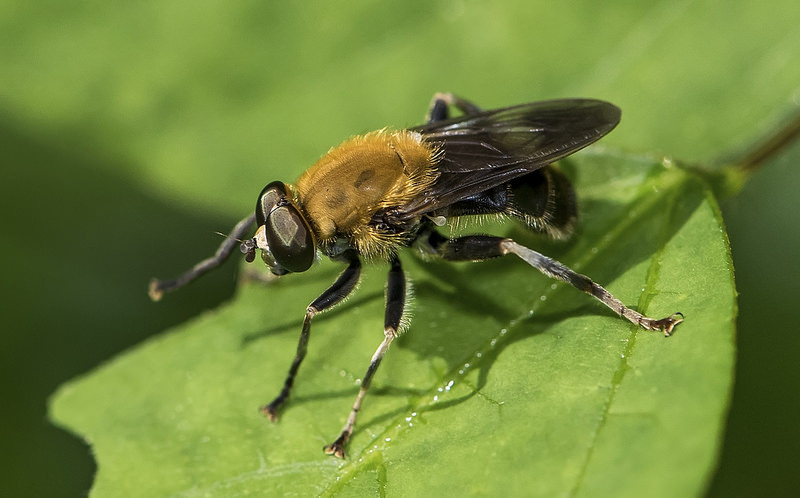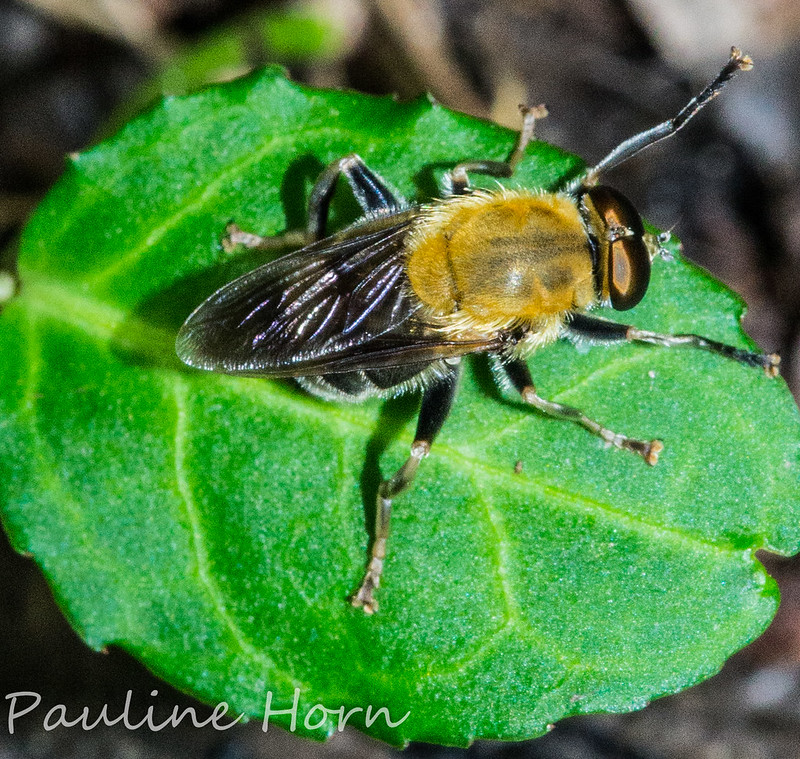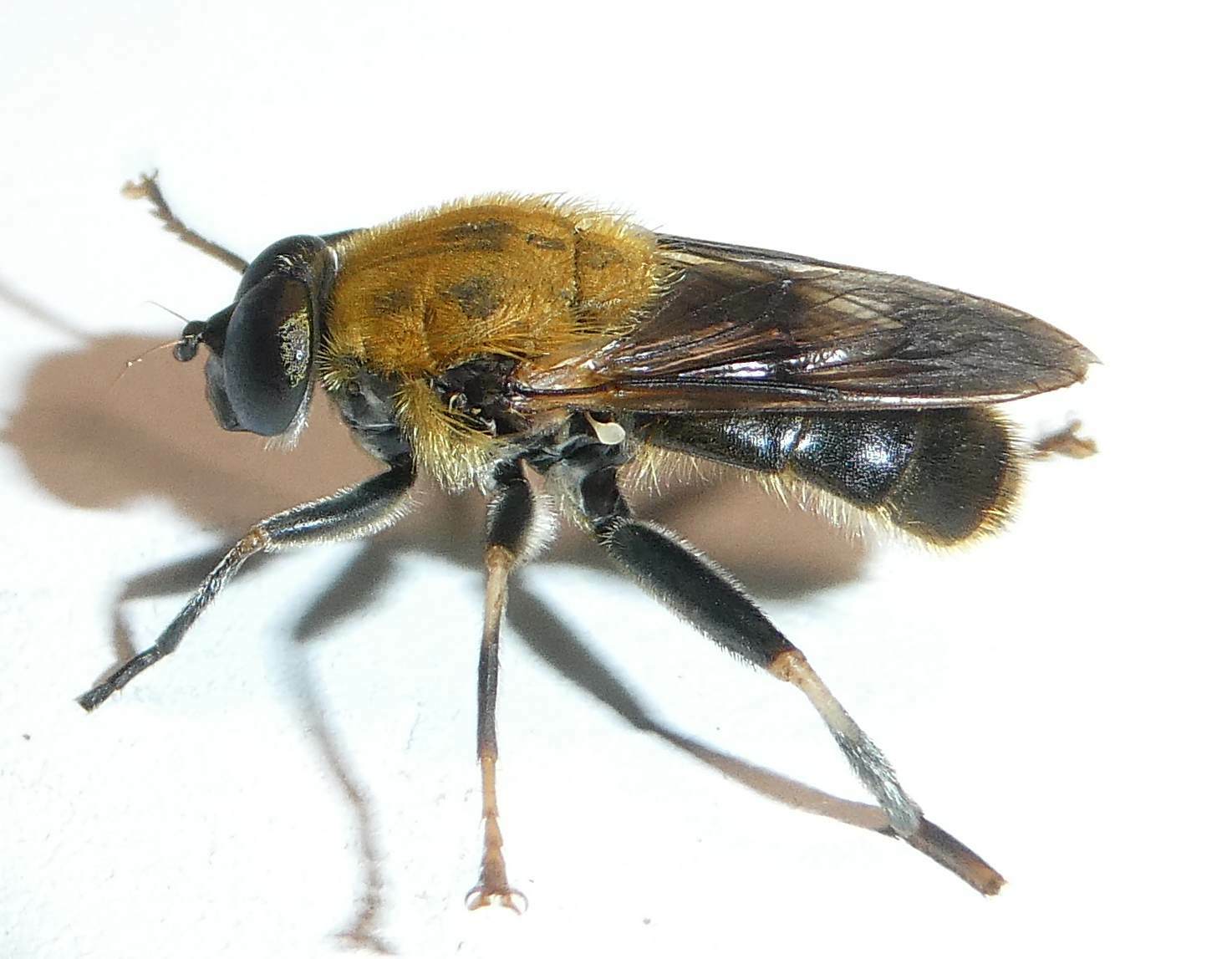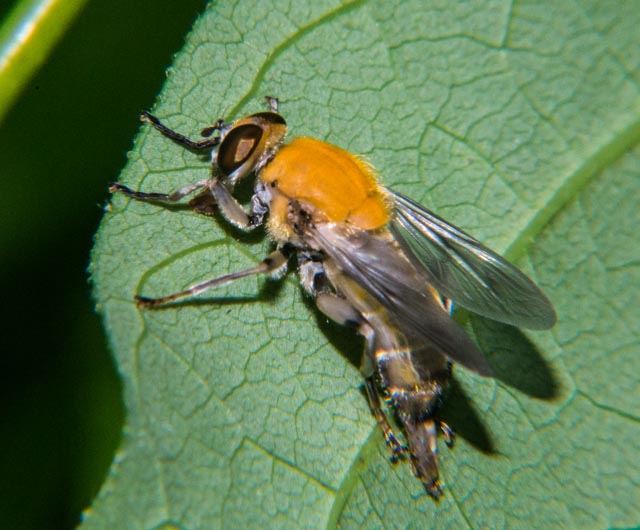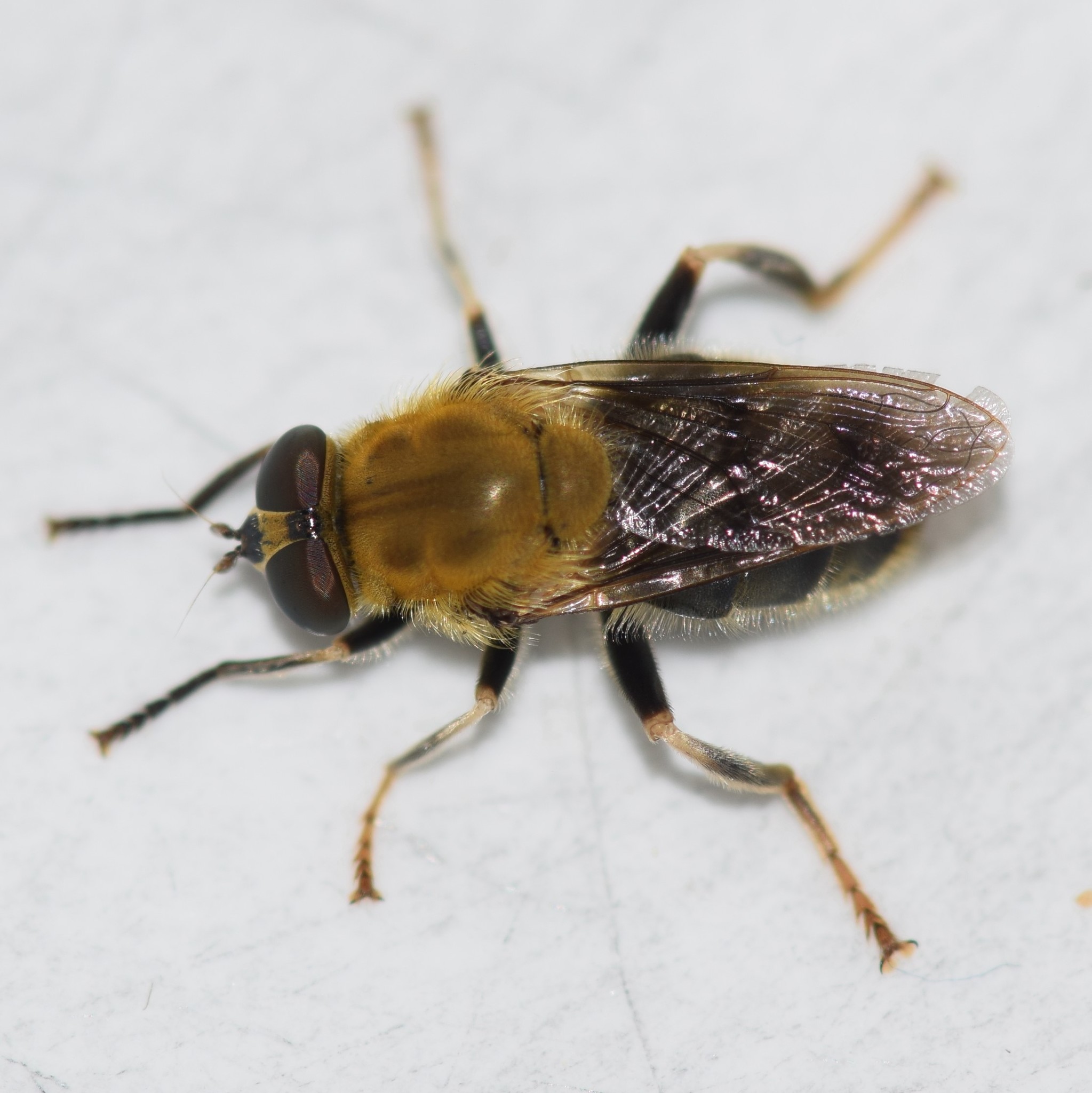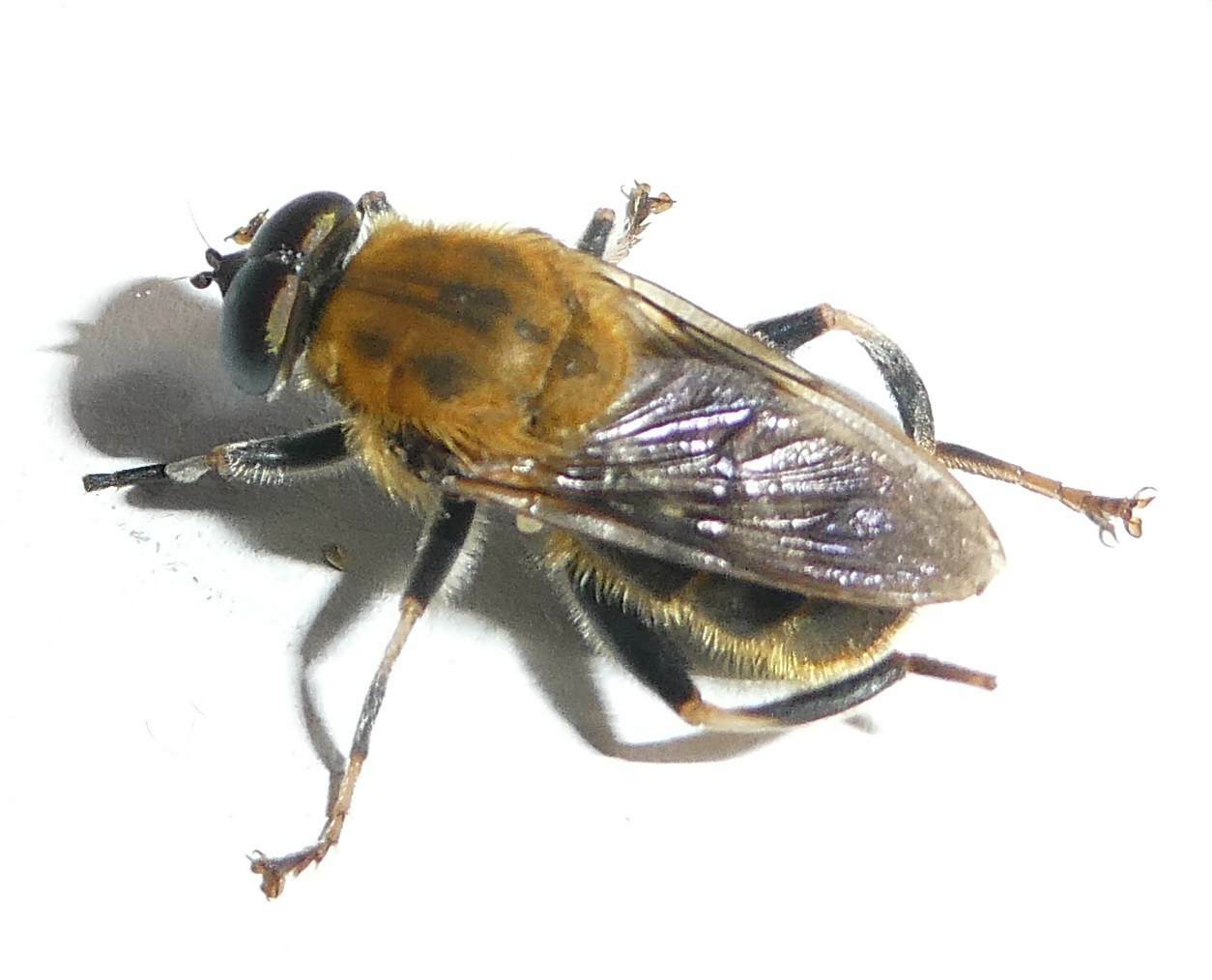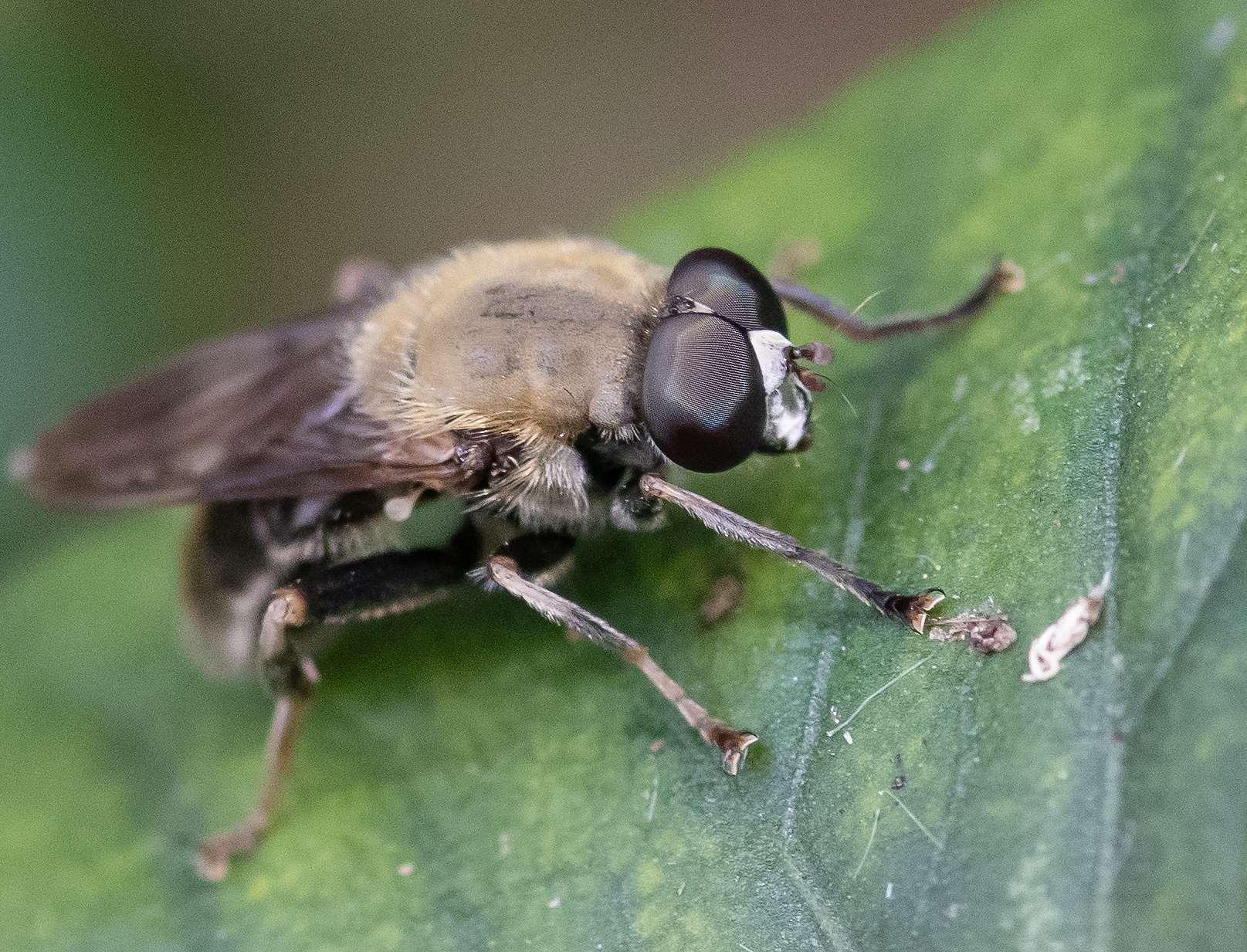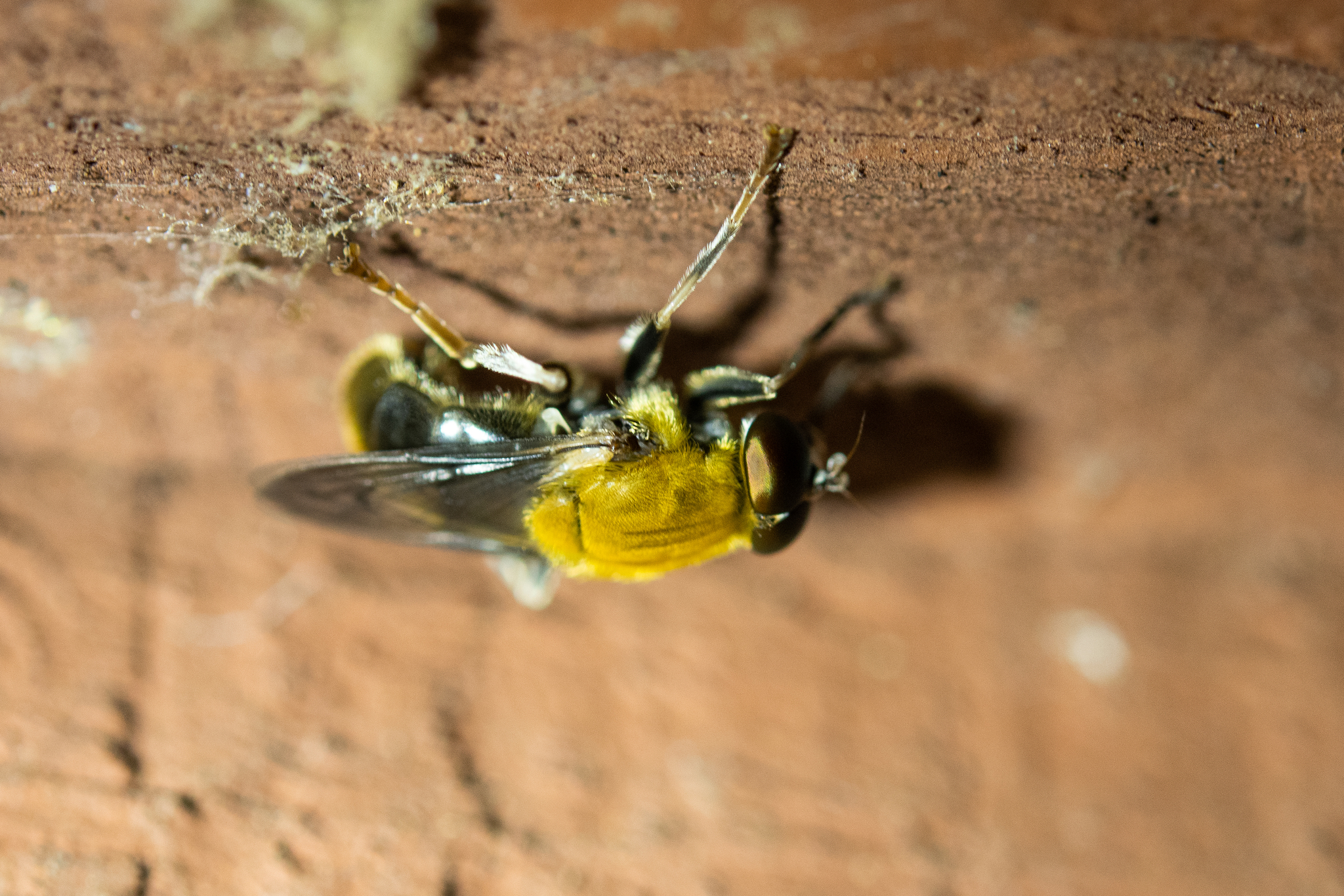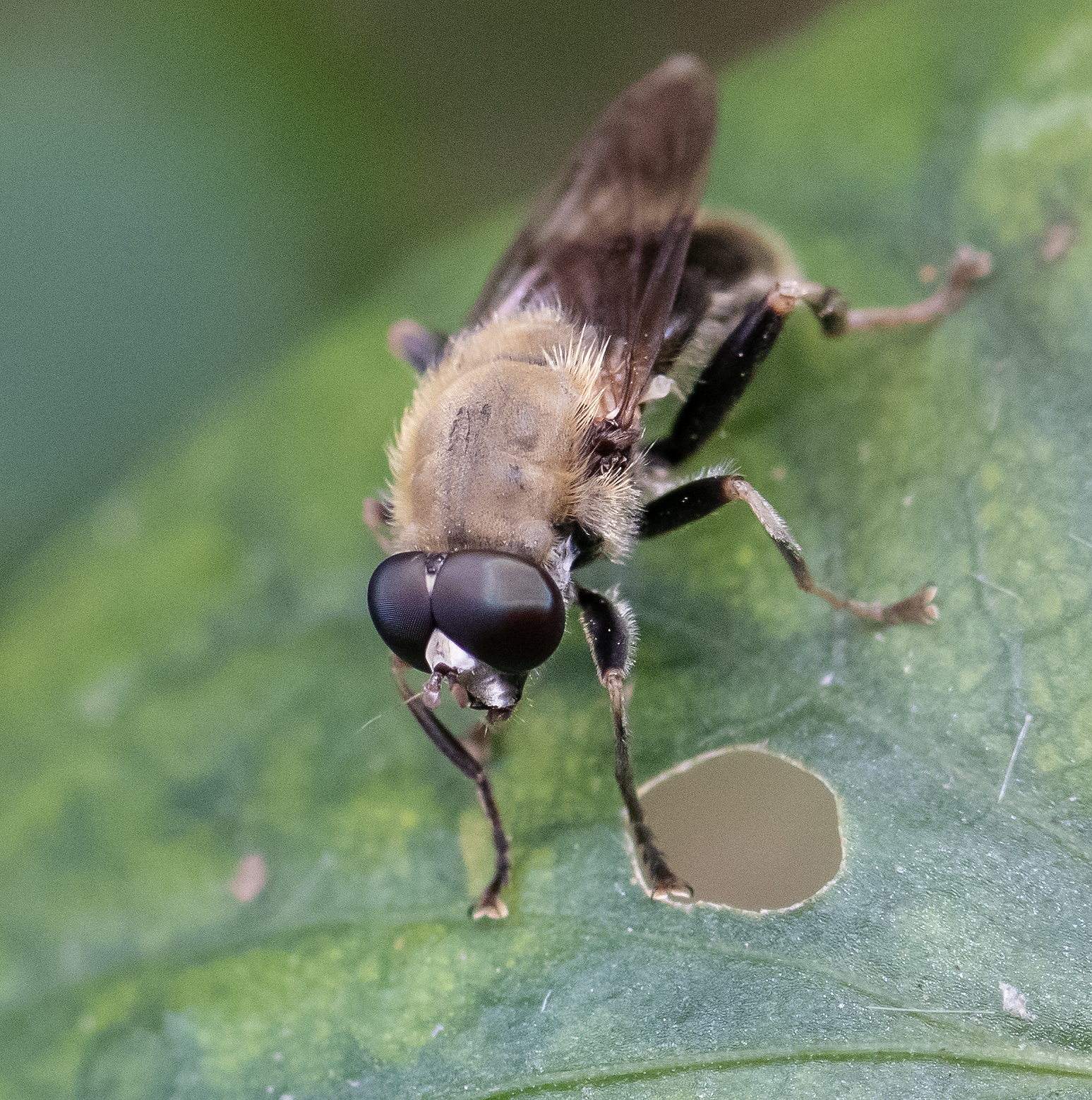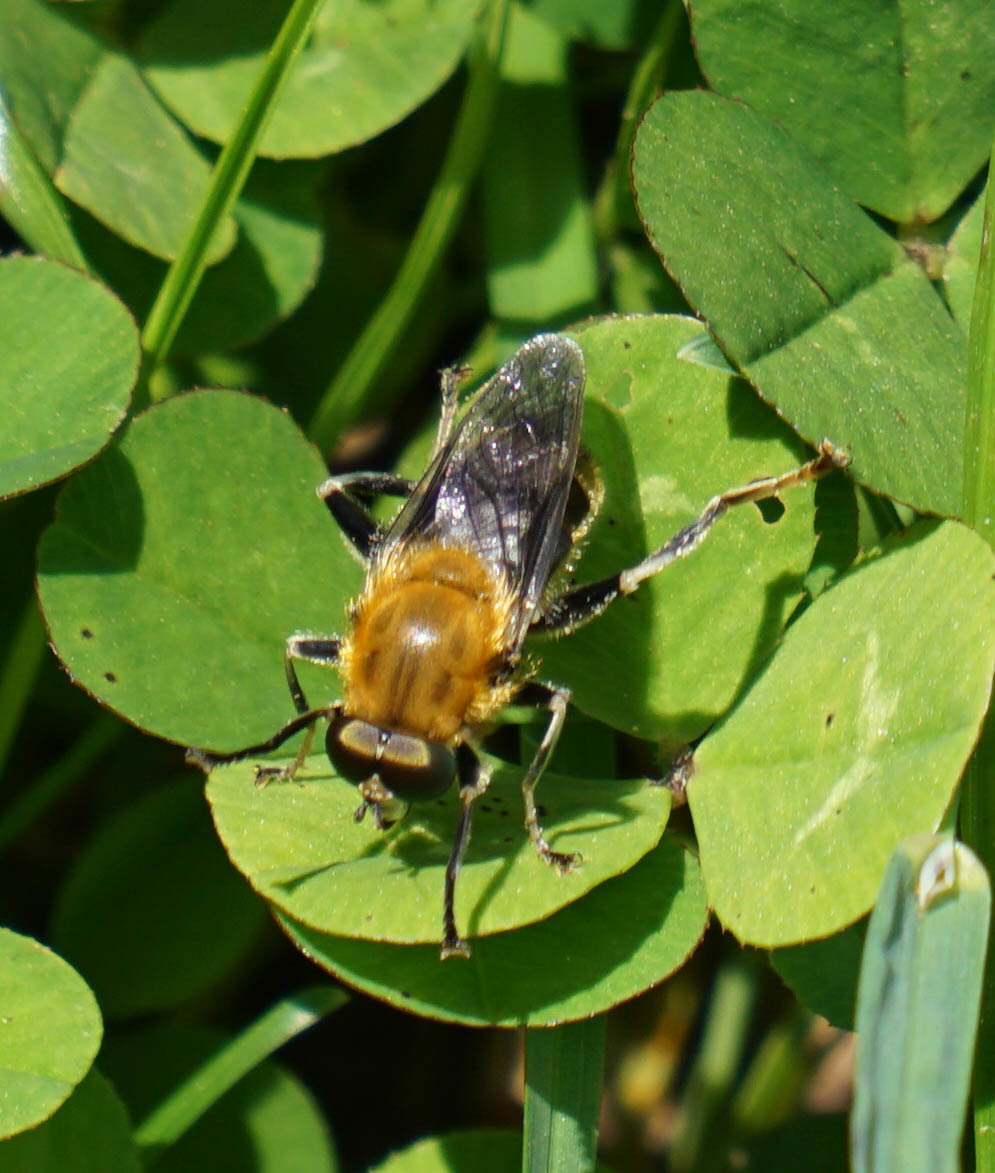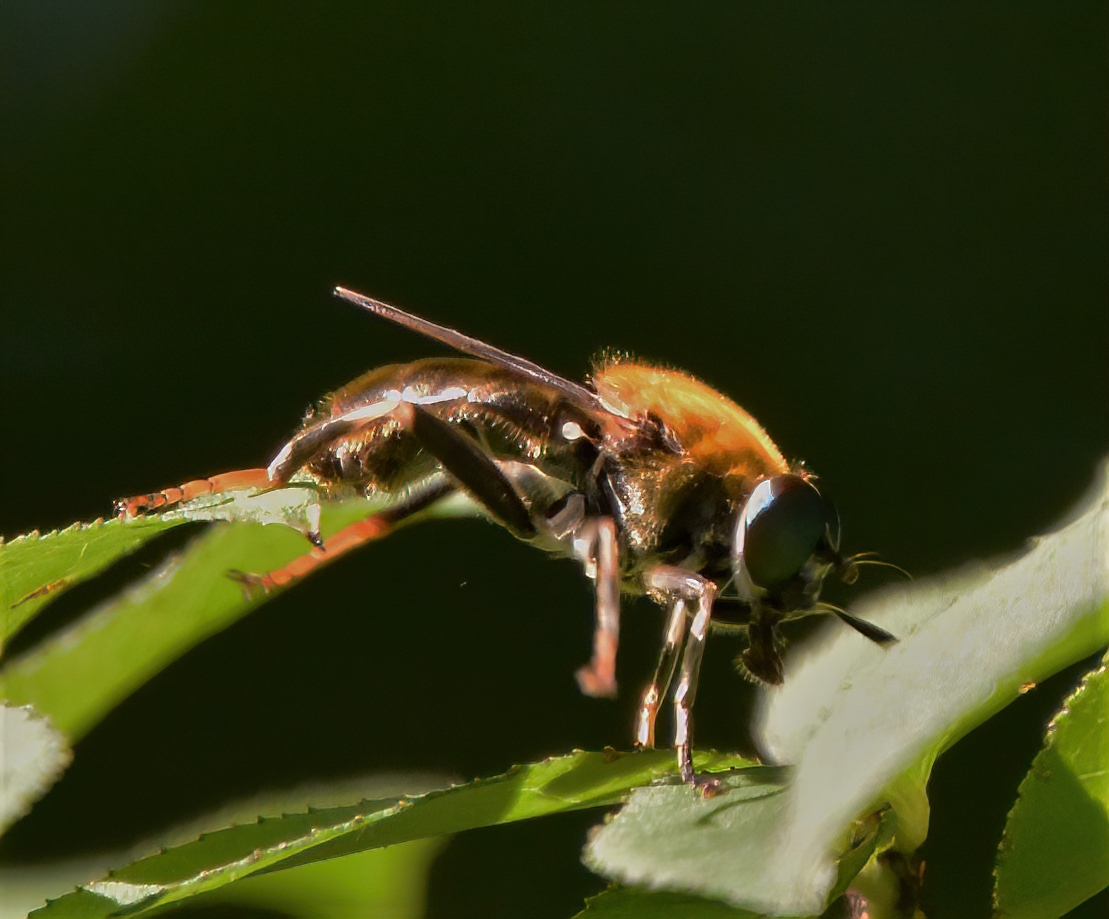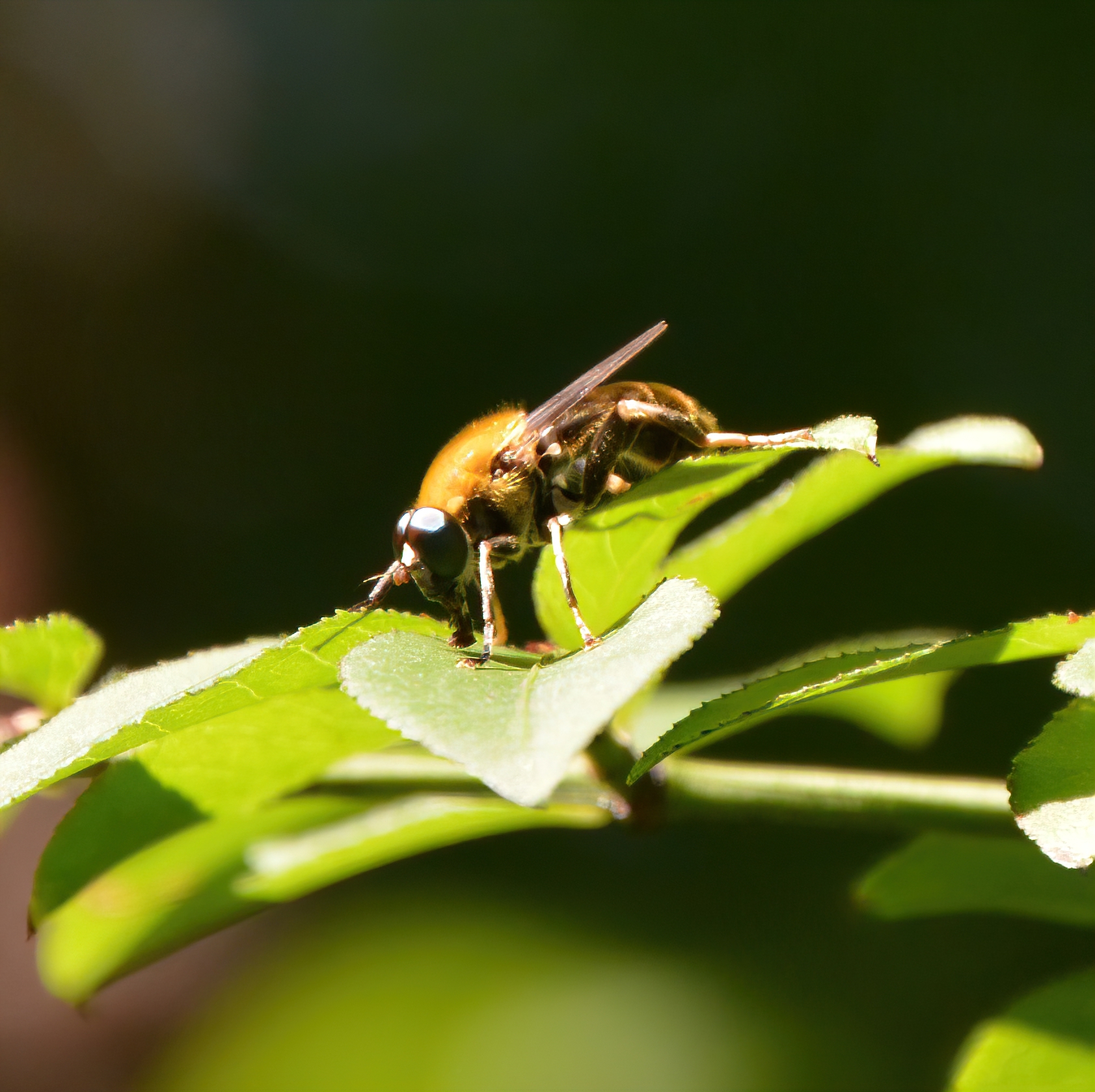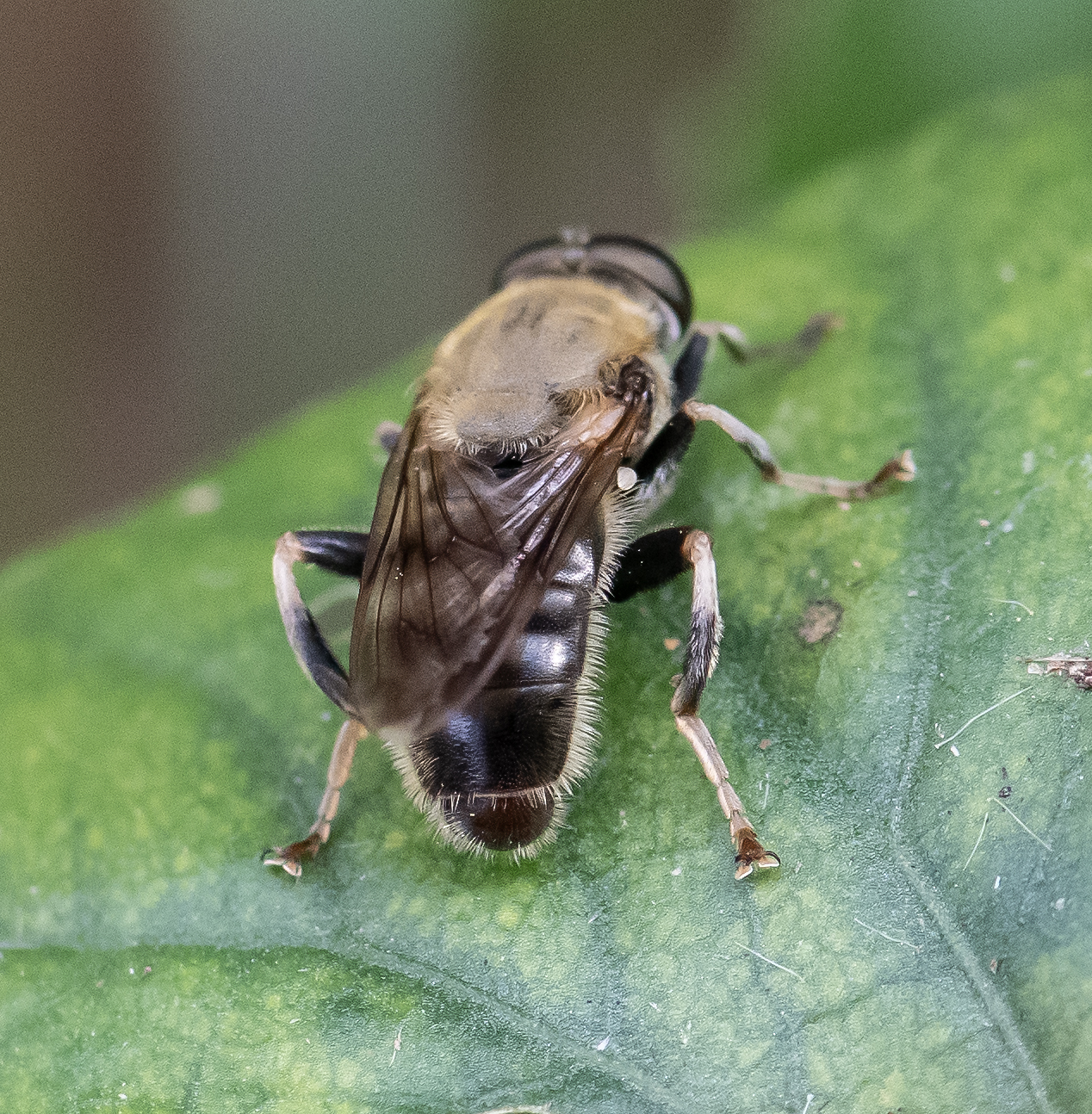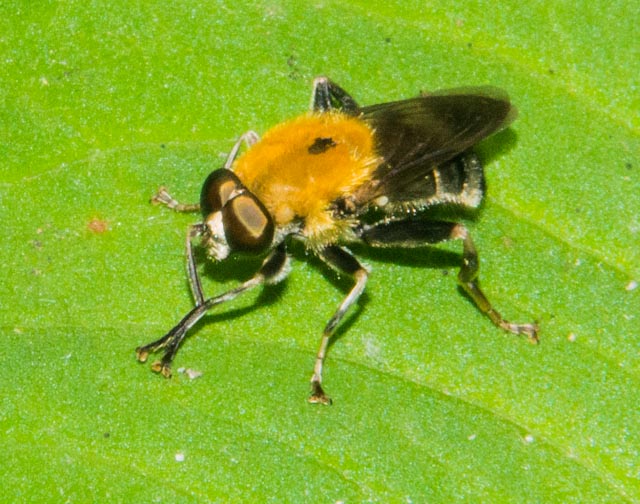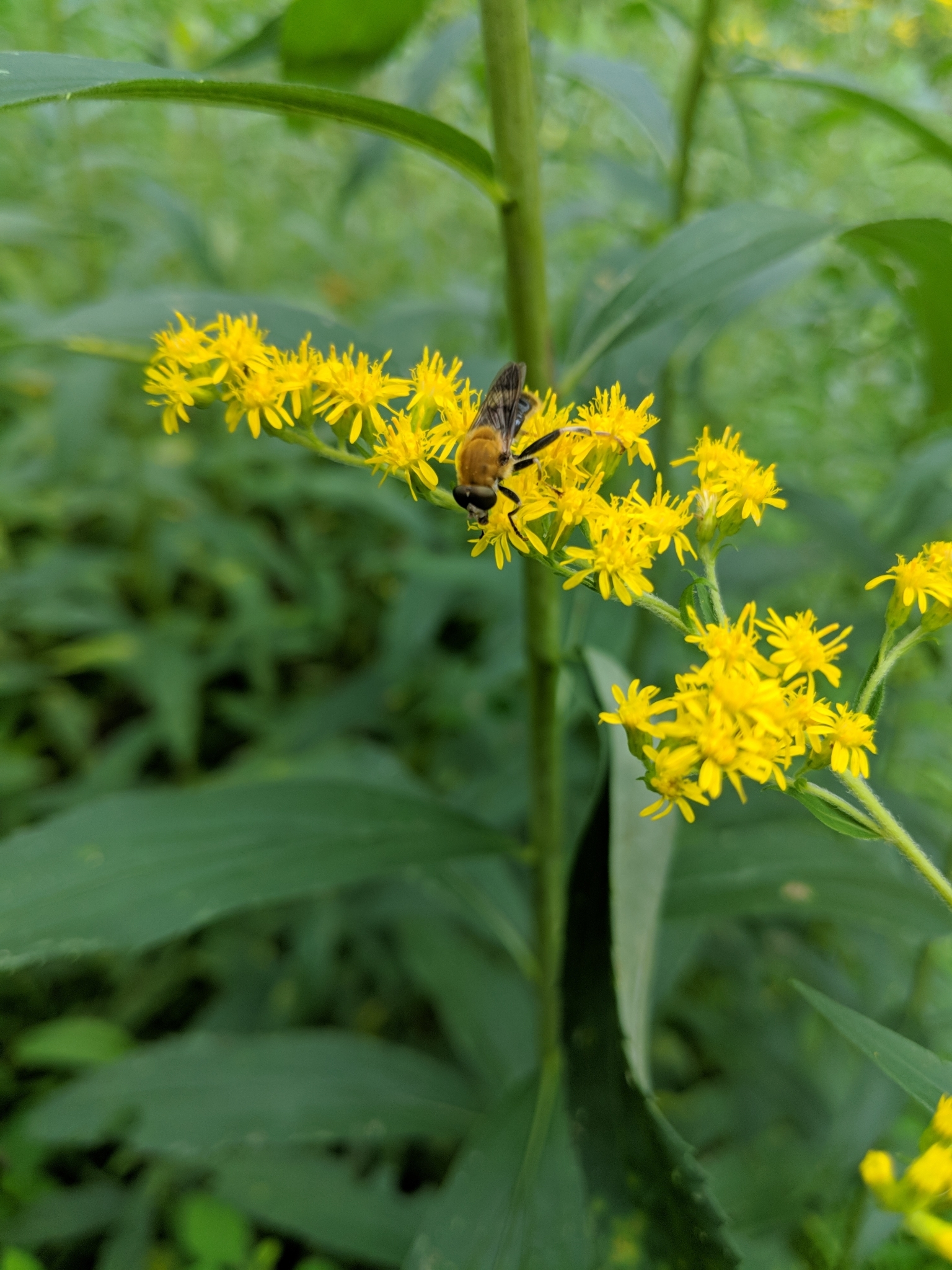Map Snapshot










22 Records
Status
Uncommon. Flies mostly May to October. Has been found in hardwood forests and has been noted "hilltopping." Larvae are unknown.
Description
Large, measuring 10.7-13.2 mm. One of several flower fly (family Syrphidae) bumble bee mimics. The only member of its genus in the Western Hemisphere. "Similar to Brachypalpus but may be recognized by differences in wing venation, the blacker abdomen, and more densely pollinose thorax." (Skevington, 2019)
Seasonality Snapshot
Source: Wikipedia
| Pterallastes thoracicus | |
|---|---|

| |
| from Canton, GA, USA | |
| Scientific classification | |
| Domain: | Eukaryota |
| Kingdom: | Animalia |
| Phylum: | Arthropoda |
| Class: | Insecta |
| Order: | Diptera |
| Family: | Syrphidae |
| Subfamily: | Eristalinae |
| Tribe: | Milesiini |
| Subtribe: | Temnostomina |
| Genus: | Pterallastes |
| Species: | P. thoracicus
|
| Binomial name | |
| Pterallastes thoracicus | |
Pterallastes thoracicus (Loew 1863), the Goldenback Fly, is an uncommon species of syrphid fly observed across central and eastern areas of the United States. Hoverflies can remain nearly motionless in flight while many are mimics of bees. The adults are also known as flower flies for they are commonly found on flowers, from which they get both energy-giving nectar and protein-rich pollen. The larvae are unknown.[2]


Distribution
[edit]References
[edit]- ^ Loew, Hermann (1863). "Diptera Americae septentrionalis indigena". Berliner entomologische Zeitschrift. 7: 275–326. Retrieved 22 July 2021.
- ^ Skevington, Jeffrey H (2019). Field Guide to the Flower Flies of Northeastern North America. ISBN 9780691189406.
